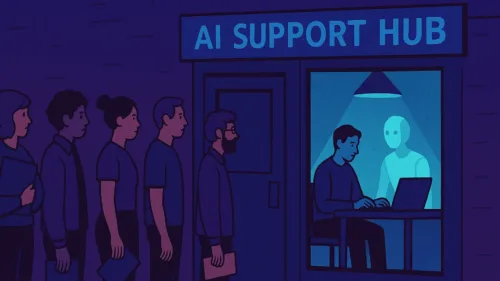When the Tablets Came: What AI Feels Like to Those of Us Who’ve Seen Disruption Before

I remember when the iPad was announced. A sleek new screen, a new way to read. At the time, I worked in digital publishing, and we all knew — even if we didn’t say it aloud — that this little tablet was going to upend everything. Not immediately, and not all at once. But something fundamental had changed.
That era brought a flurry of hope wrapped in apprehension. “Digital will support print,” we said. “Readers will still want the physical experience.” And yet, one by one, the print magazines started folding. Not because the content stopped mattering, but because the delivery method evolved. And with it, the business model — and the livelihoods of many people who had built their careers around an old, suddenly outdated structure.
I’m seeing the same signals now. Only this time, it’s not the printing press that’s been disrupted — it’s human expertise itself.
AI isn’t knocking politely on the doors of design studios, dev shops, and content houses. It’s already inside. Many of us — myself included — are using it to speed things up, to prototype faster, to support our thinking, to ideate better. The tools are incredible. The efficiencies undeniable. But they don’t come without a cost.
For every designer who’s using AI to accelerate wireframes, there’s a freelancer not getting that exploratory project. For every developer who’s using AI to solve a problem in seconds, there’s one fewer reason to visit Stack Overflow — and one fewer ad impression supporting the engineers who built it.
Yes, AI is supportive. But it’s also subtractive. And if we only focus on the support, we risk missing the quiet displacement that’s happening just outside our own toolset.
To be clear: I’m not anti-AI. I’m not a doomsday prepper for design. I believe we’ll find new paths forward, new creative and technical frontiers to explore. But I also believe in acknowledging the fear and uncertainty that comes with seismic shifts.
This is the new normal — and no, it doesn’t feel normal yet.
We’re navigating more than just a technical revolution. We’re balancing it alongside government spending cutbacks, tighter margins, economic ambiguity, and a collective anxiety about what’s next. It’s hard to plan a roadmap when the road itself keeps shifting.
So maybe this isn’t a call to action. Maybe it’s just a shared breath between those of us who’ve seen disruption before. We got through it then, and we’ll get through it now — not without change, not without loss, and certainly not without resilience.
But let’s not pretend it’s all upside.
